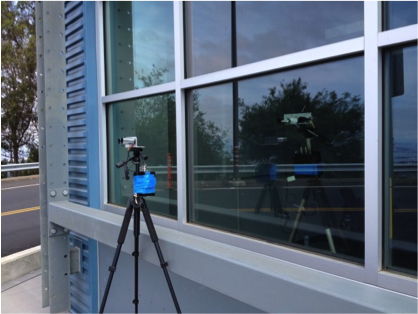Rapid Building Energy Modeler

The Challenge: Prove Exciting New Building Modeling Technology
The Rapid Building Energy Modeler (RAPMOD) easily and automatically maps a building and interacts with energy modeling tools, saving time and money while boosting accuracy. Deployed on all commercial buildings with a floor area greater than 50,000 sq ft, RAPMOD could save ~$3B by reducing energy modeling costs for major retrofits, retro-commissioning, and performance monitoring. But how could researchers prove that it can quickly and accurately determine how building components perform – in this case windows?
The Solution: FLEXLAB®
Testing RAPMOD in the U.S. Department of Energy's FLEXLAB® facility at Lawrence Berkeley National Laboratory (Berkeley Lab) life-size, controlled environment while precisely measuring conditions across a range of interior temperatures allowed researchers to verify RAPMOD’s window-measuring capabilities. The experiment showed that RAPMOD can quickly and accurately evaluate a window’s performance in terms of energy and visual quality, revealing new possibilities for energy efficiency and occupant comfort.

The Bottom Line: Verified and Fine-Tuned RAPMOD’s Performance (Reduced Building Energy Model Creation Time by 30%)
- The FLEXLAB tests helped to speed the development of RAPMOD and increase the accuracy of its window-measuring capabilities.
- FLEXLAB provided a unique controlled environment to test a wide variety of window conditions, solar orientations and interior temperature conditions, all at a realistic scale.
- FLEXLAB testing also suggested ways to improve the RAPMOD system.
Download the full case study here: RAPMOD
"LBNL’s FLEXLAB facility provided a perfect platform to experimentally verify our method of measuring the U-values of windows, which are key to predicting the energy use of real buildings."
Annie Marston, Baumann Consulting, Head of Building Performance
